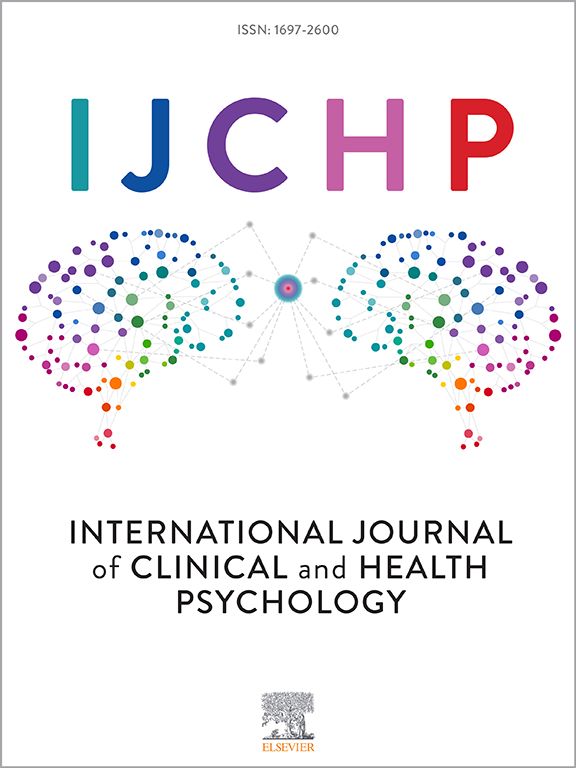Psychological predictors of CPAP therapy adherence in obstructive sleep apnea patients: insights from the predisposing, precipitating, and perpetuating factors model
IF 4.4
1区 心理学
Q1 PSYCHOLOGY, CLINICAL
International Journal of Clinical and Health Psychology
Pub Date : 2025-06-24
DOI:10.1016/j.ijchp.2025.100602
引用次数: 0
Abstract
Continuous positive airway pressure is the standard treatment for obstructive sleep apnoea (OSA), a condition marked by recurrent interruptions in breathing during sleep that impairs quality of life. Despite its efficacy, adherence to continuous positive air pressure (CPAP) remains suboptimal and is influenced by various psychological and contextual factors.
This scoping review adopts the 3P model—predisposing, precipitating, and perpetuating factors—to identify key motivators and barriers impacting CPAP adherence in OSA patients. A systematic search of PubMed, PsycINFO, and Scopus identified 43 relevant studies. Inclusion criteria focused on peer-reviewed, full-text articles investigating psychological aspects influencing CPAP adherence in adults with OSA. Paediatric populations, non-English publications, and studies without an explicit focus on psychological variables were excluded.
Predisposing factors include psychological comorbidities, low health literacy, and misconceptions about OSA and CPAP. Perpetuating factors include ongoing psychological barriers, inadequate patient education, and suboptimal communication with healthcare providers. Precipitating factors include device-related anxiety, and perceived stigma.
In addition, motivators that support adherence have been identified, such as perceived improvements in quality of life, bed partners’ support, and tailored educational programmes highlighting the benefits of CPAP. Interventions such as cognitive behavioural therapy and psychological patient support show promise in improving adherence. Introducing a novel application of the 3P model, this scoping review underscores the complexity of psychological and behavioral determinants of CPAP adherence, highlighting the need of a multifaceted, patient-centered approach. Future research should evaluate the effectiveness of personalized interventions through longitudinal studies to assess their impact on treatment adherence and clinical outcomes.
阻塞性睡眠呼吸暂停患者CPAP治疗依从性的心理预测因素:来自易感、诱发和延续因素模型的见解
持续气道正压通气是阻塞性睡眠呼吸暂停(OSA)的标准治疗方法,OSA是一种以睡眠期间呼吸反复中断为特征的疾病,会损害生活质量。尽管持续正压通气(CPAP)有效,但仍不是最理想的,并受到各种心理和环境因素的影响。本综述采用3P模型——易感因素、促发因素和持续因素——来确定影响OSA患者坚持CPAP的关键因素和障碍。通过对PubMed、PsycINFO和Scopus的系统搜索,确定了43项相关研究。纳入标准侧重于同行评审的全文文章,研究影响OSA成人患者CPAP依从性的心理因素。排除了儿科人群、非英语出版物和没有明确关注心理变量的研究。诱发因素包括心理合并症、低健康素养以及对OSA和CPAP的误解。长期存在的因素包括持续的心理障碍、患者教育不足以及与医疗保健提供者的沟通不佳。诱发因素包括与设备相关的焦虑和感知到的耻辱。此外,支持依从性的激励因素已经确定,例如生活质量的改善,床伴的支持,以及强调CPAP益处的量身定制的教育计划。认知行为疗法和心理病人支持等干预措施有望改善依从性。本综述介绍了3P模型的一种新应用,强调了CPAP依从性的心理和行为决定因素的复杂性,强调了多方面、以患者为中心的方法的必要性。未来的研究应该通过纵向研究来评估个性化干预措施的有效性,以评估其对治疗依从性和临床结果的影响。
本文章由计算机程序翻译,如有差异,请以英文原文为准。
求助全文
约1分钟内获得全文
求助全文
来源期刊

International Journal of Clinical and Health Psychology
PSYCHOLOGY, CLINICAL-
CiteScore
10.70
自引率
5.70%
发文量
38
审稿时长
33 days
期刊介绍:
The International Journal of Clinical and Health Psychology is dedicated to publishing manuscripts with a strong emphasis on both basic and applied research, encompassing experimental, clinical, and theoretical contributions that advance the fields of Clinical and Health Psychology. With a focus on four core domains—clinical psychology and psychotherapy, psychopathology, health psychology, and clinical neurosciences—the IJCHP seeks to provide a comprehensive platform for scholarly discourse and innovation. The journal accepts Original Articles (empirical studies) and Review Articles. Manuscripts submitted to IJCHP should be original and not previously published or under consideration elsewhere. All signing authors must unanimously agree on the submitted version of the manuscript. By submitting their work, authors agree to transfer their copyrights to the Journal for the duration of the editorial process.
 求助内容:
求助内容: 应助结果提醒方式:
应助结果提醒方式:


